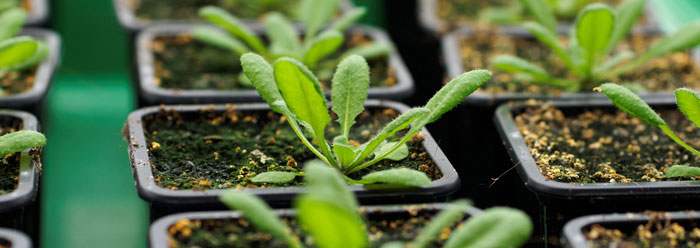In the mind of an evolutionist, genes with similar DNA sequences across diverse types of organisms are called "highly conserved" and are thought to be ancient (derived from distant ancestors). In light of intelligent design principles, similar genes across diverse organisms serve as basic engineered units working in common core biochemical functions.
Further, evolutionists refer to genes that are very different between organisms as more "highly evolved" or "recently derived." In a creation-based model, these genes are likely to represent the genetic uniqueness that God chose to characterize each created kind.
For this study, geneticists experimented on a small mustard-like plant that has been widely used in research.2 They examined two classes of protein-coding genes—"ancient" and "recent" (otherwise known as "core" and "unique")—and tracked their levels of expression across the different stages of plant embryo development.
In a traditional Darwinian scenario, one would expect the "ancient genes" to predominate early in development and then generally phase to more evolutionarily advanced "young" genes. However, in this study, the "ancient genes" exhibited a fairly constant expression across the stages of development.
In contrast, the "young genes" showed a burst of expression at the beginning of embryogenesis, right when the embryos should have reflected their most ancient evolutionary beginnings. They then slowed down towards the middle and dramatically increased again towards the end. The data indicated that the "young" (unique) genes, in particular, precisely specified each developmental stage in strong support of the creation model.
A prior study showed this same overall type of embryo development pattern in zebrafish and fruit flies.2 Of course, plants also continue to exhibit different phases of development after a seed sprouts and the plant grows.
These unique discoveries refute evolutionary origins and strongly support creation. Plants and animals deploy just the right genes in just the right amounts and at just the right times, as though they were created after their kinds to develop according to their unique genetic blueprints.
References
- Quint, M. et al. 2012. A transcriptomic hourglass in plant embryogenesis. Nature. 490 (7418): 98-101.
- Kalinka, T. et al. 2010. Gene expression divergence recapitulates the developmental hourglass model. Nature. 468 (7325): 811-814.
* Dr. Tomkins is Research Associate at the Institute for Creation Research and received his Ph.D. in Genetics from Clemson University.
 Plant
Embryo Development Supports Creation by Jeffrey Tomkins, Ph.D. *
Plant
Embryo Development Supports Creation by Jeffrey Tomkins, Ph.D. *